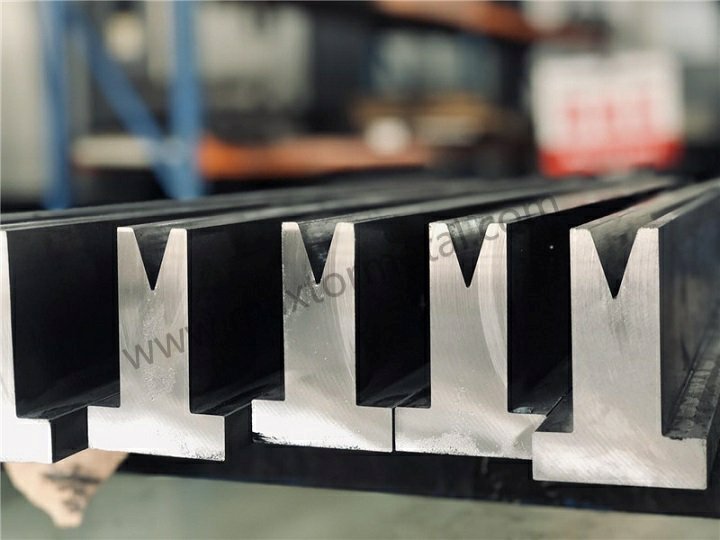
Choosing the right press brake die sets keeps your materials safe. You can stop scratches and dents by using good tooling. Regular maintenance also helps protect your materials. Urethane dies let you bend soft metals like aluminum and copper. These dies leave fewer marks or problems. Urethane is flexible and gives smooth finishes. It also lowers the chance of damage.
| Tooling Type | Wear Resistance | Durability | Cost |
|---|---|---|---|
| Hardened Steel | Moderate | Moderate | Lower |
| High-Speed Steel (HSS) | High | High | Higher |
| Tungsten Carbide | Very High | Very High | Highest |
| Picking the right press brake tooling helps you feel sure. You know your valuable materials are safe with every bend. |
Key Takeaways
- Picking the right press brake die sets stops scratches and dents.
- Keeping your tools clean and checked helps them last longer and keeps you safe.
- Urethane dies work best for soft metals like aluminum because they help stop damage.
- If you pick the wrong die, your material can bend wrong and cause problems with quality.
- Good tooling makes sure bends are correct, so products look the same and less gets wasted.
- Check and clean your press brake tools often to keep them working well.
- Always use a die made from the right material for your workpiece to stop damage and wear.
- Think about using automation and CNC to work faster and set up quicker.
Risks of Wrong Press Brake Die Sets
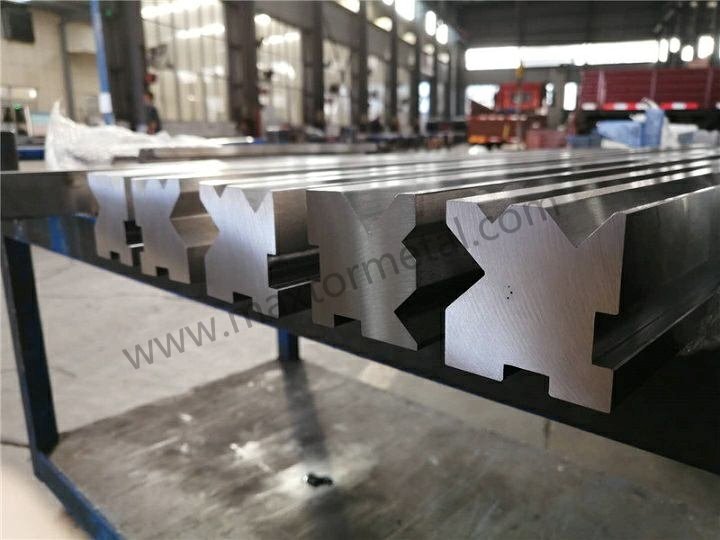
Choosing the wrong press brake die sets can cause many problems in your workshop. You want to protect your materials and keep your production running smoothly. Let’s look at the main risks you face when the selection of press brake tooling goes wrong.
Material Damage
Scratches and Dents
You may notice scratches or dents on your finished parts if you use the wrong die. Press brake die sets that do not match your material or bending needs can leave marks on the surface. This is a big issue when you work with high surface precision requirements. Scratches lower the product quality and can lead to rejected parts. You want to avoid extra costs and wasted time.
Warping
Warping happens when the die opening does not fit your material thickness. If the V-die opening is too large, you may see too much spring back. If the opening is too small, you need more force, which can crack the metal or wear out your tooling. Warped parts do not meet specifications and can ruin your production schedule.
Quality Issues
You want every part to look and perform the same, especially in mass production. Poor selection of press brake tooling can cause:
- Tooling wear, which changes the bend angles over time.
- Misalignment of dies, leading to parts that do not match your drawings.
- Incorrect die openings, which increase scrap rates and slow down production.
- Inconsistent bending angles, forcing you to rework or reject parts.
These problems lower your product quality and hurt your reputation with customers.
Safety Concerns
Operator safety matters in every press brake operation. Using the wrong die can put you and your team at risk.
Many describe what happened to them when tool selection went awry, and how they ended up with tools looking like the one shown in Figure 1. The tonnage overload utterly destroyed the die, but trust me, it can get even worse. That’s because this die was a traditional planer tool and, as such, was manufactured from softer steel that was flame-hardened at best. If you overload this kind of tooling, you hear a loud noise or bang; you then might see broken pieces fall to the floor, putting the operator’s feet in harm’s way. But if the operator avoided having his foot smashed, he could return to the press brake, select another tool, and try again—maybe after he finished changing his underwear.
You may also face risks from brittle dies. Pieces can fly across the shop, causing injury or damage. Proper selection of press brake die sets helps you avoid these dangers and improves operational safety. When you match the punch and V-die to your material and bending needs, you lower the chance of accidents.
You want to keep your team safe and your production on track. Careful selection of press brake tooling protects both your materials and your people.
Benefits of High-Quality Press Brake Tooling
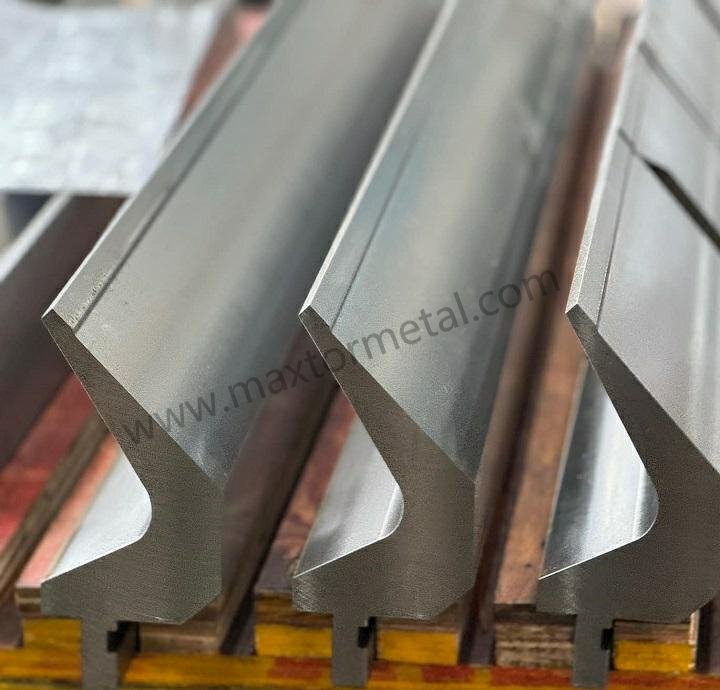
Accurate Bends
You want every bend to be correct. Good press brake tooling helps you do this. The right die and punch spread force across your material. This stops mistakes and keeps bends straight. Your materials stay safe from scratches and dents. This is important when you need smooth surfaces.
- The right tool shape spreads force evenly.
- Strong tooling, like precision ground press brake tooling, keeps its shape and stays accurate.
- Cleaning and checking your tools often keeps them working well.
If you need special shapes, you can look at custom blades for your needs.
Longevity
You want your press brake tooling to last a long time. Tough materials help a lot. Nanjing Metal uses 42CrMo alloy steel. This steel handles high pressure and does not wear out fast. You change your tooling less and waste less material.
| Property | 42CrMo4 | C45 |
|---|---|---|
| Tensile Strength | High | Moderate |
| Yield Strength | High | Moderate |
| Wear Resistance | Excellent | Good |
| Toughness | Excellent | Moderate |
| Heat Treatment | Optimized for performance | Basic treatment |
| Application Suitability | High-performance tooling | General-purpose tooling |
You save money and time with strong press brake tooling. It is safer because strong tools do not break easily.
Consistent Results
You want every part to look and work the same. Good press brake tooling helps you get steady results. Careful quality checks make sure each die and punch is made well.
- Cleaning and checking your tools often keeps them reliable.
- Lining up punches and dies right stops uneven bends.
- Accurate sizes and smooth finishes help you reach your goals.
- Advanced checks, like 3D scanning and measuring machines, make sure your tooling matches the design.
- Testing shows your press brake tooling works well in real jobs.
You waste less material and avoid fixing mistakes with good tooling. You keep your product quality high and your customers happy.
How Tooling Protects Materials
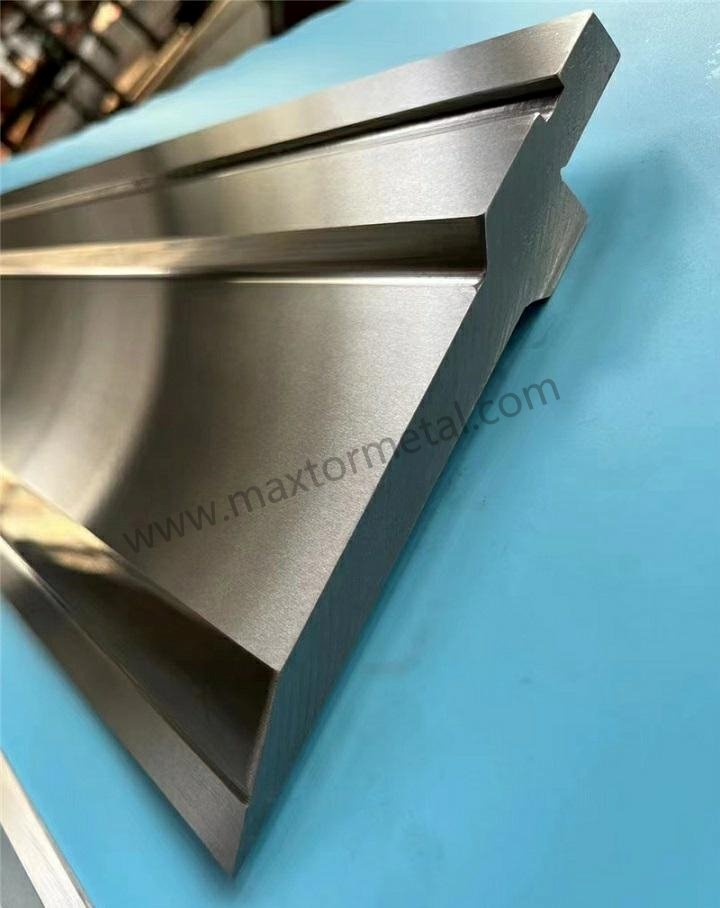
Die Geometry
It is important to look at die geometry when picking press brake tooling. The die’s shape and size change how your material bends. Good die geometry helps you avoid thinning and wrong angles. You get accurate bends and keep your material safe. Many shops use CAD software to test and improve die geometry before making parts. You can also use 3D printing to make special shapes and change them fast during production.
| Aspect | Impact on Material Damage |
|---|---|
| Die Geometry | Makes bending accurate and stops thinning or wrong angles |
| CAD Software | Helps test and improve die geometry before making parts |
| 3D Printing Technology | Lets you quickly make and change complex shapes during production |
When you pay attention to die geometry, your press brake tooling works better. You lower the chance of mistakes and damage.
Specialized Designs
You can pick special designs to keep your materials safe while bending. These designs help you stop scratches, dents, and other problems.
Polyurethane Dies
Polyurethane dies have a soft surface for bending. You use them with sensitive materials like aluminum or copper. These dies lower the chance of marks and keep parts clean. Polyurethane bends easily and absorbs force. This helps you get smooth finishes. You use these dies when you need extra protection.
Protective Films
Protective films give your materials another layer of safety. You put a film between the die and your workpiece. The film stops direct contact and lowers friction. You avoid scratches and dents, especially with shiny or coated metals. Many industries use protective films to keep products looking good during production.
Tip: Always check your special designs before starting a job. You can save time and money by stopping damage early.
Surface Finish
Surface finish is important for keeping your materials safe. If your press brake tooling is rough, you may see scratches and marks. Controlling roughness matters because high friction causes more wear and defects. You want a smooth surface to lower the chance of scratching.
- Scratches and marks often come from rough tools.
- Good surface finishes lower defects and help metal products last longer.
- Industries like cars and medical devices need smooth surfaces to stop corrosion and wear.
You get better results when you focus on surface finish. Picking and caring for your tooling helps protect your materials and keeps production running well.
Choosing the Right Press Brake Tooling

Picking the right press brake tooling keeps your materials safe. It also helps your production work better. You should think about a few things before you start bending. These things are the type of material, how thick it is, and what kind of bends you want. Each choice changes how good your finished parts are.
Material Type
Steel, Aluminum, and Other Metals
You use many metals in sheet metal work. Each metal bends in its own way. Steel is strong and can take more force. Aluminum is softer and can get scratched or dented easily. Other metals, like copper or brass, need special care too.
- Softer metals like aluminum need wider dies. This helps stop marks and keeps the metal from breaking.
- Harder metals like steel can use smaller dies. These dies help you make sharp bends and give you more control.
- Aluminum can spring back after bending. You might need to pick a different die or use CNC controls to get the right angle.
You should always use a die that matches your metal. This helps stop damage and keeps your parts looking nice.
Surface Sensitivity Considerations
Some metals have surfaces that scratch easily. Shiny or coated metals can get marked fast. You want to keep these surfaces clean and free from scratches.
- Use dies that are smooth or have special coatings.
- Put a protective film between the die and your metal.
- Pick soft materials like polyurethane for extra safety.
These steps help your metal parts look new. You save money and keep your customers happy.
Matching Die Material to Workpiece
The die material is important too. You want your die to last and not hurt your parts.
- Use hardened steel dies for tough jobs and long use.
- Pick softer or coated dies for gentle metals.
- Match the die’s hardness to your metal to stop wear and marks.
If you need a special die, you can check out custom blades for your job.
Thickness
Die Opening Selection
How thick your metal is changes which die opening you need. The right die opening keeps your bends right and your tools safe.
| Material Thickness | Recommended V-Die Opening | Notes |
|---|---|---|
| Thin (0.5-1 mm) | 6-8x thickness | Use wider dies for soft metals |
| Medium (1-3 mm) | 8x thickness | Standard for most steel and aluminum |
| Thick (3+ mm) | 10-12x thickness | Wider dies reduce force and prevent cracks |
- Try the “Rule of 8”: The V-die opening should be about 8 times the thickness.
- Change it between 6 and 12 times based on your metal and bend.
- Make sure the bend radius fits the thickness to stop cracks.
Minimum and Maximum Thickness Limits
Your press brake and dies can only handle certain thicknesses. You need to know these limits.
| Type of Press Brake | Minimum Thickness | Maximum Thickness |
|---|---|---|
| Manual | 18 gauge (0.0478 inches) | 10 gauge (0.135 inches) |
| Hydraulic | 24 gauge (0.0239 inches) | 1/2 inch (0.500 inches) or more |
| CNC | 24 gauge (0.0239 inches) | Several inches (varies) |
Check your machine and tool specs before you start. This keeps your tools safe and your work going well.
Adjusting for Springback
Different metals bend back after you bend them. You need to change your process to get the right angle.
| Metal Type | Springback Characteristics |
|---|---|
| Aluminum | Moderate springback; varies by alloy |
| Stainless Steel | High springback; more in high-strength grades |
| Mild Steel | Moderate springback; depends on carbon and heat treatment |
- Use CNC controls to fix springback.
- Test your bends and change the die angle if you need to.
- For hard metals, try using filler tooling to stop collapse.
Bending Needs
Bend Radius Requirements
The bend radius changes how strong and nice your part is. You want the radius to fit your metal and what you need.
- Small radii need careful tools and setup.
- Big radii are easier but may need wider dies.
- Always check the smallest bend radius for your metal to stop cracks.
Complex vs. Simple Bends
Some jobs need simple bends. Others need shapes with many angles.
| Key Consideration | Complex Bends | Simple Bends |
|---|---|---|
| Material Thickness | Needs precise tooling for changes | More forgiving |
| Material Type | Must consider each metal’s properties | Still important, but less critical |
| Grain Direction | Very important to avoid defects | Less impact |
| Desired Bend Radius | Needs careful calculation | Easier with standard tooling |
| Desired Bend Angles | Often has many angles and adjustments | Usually straightforward |
For complex bends, you might need custom dies or special setups. Simple bends work with regular tools.
Special Forming Applications
Some jobs need special shapes or features. You can use special or multi-use dies for these jobs.
- Special dies are made for one job. They help you make unique parts.
- Multi-use dies let you make different shapes without changing tools. This saves time and helps you make more parts.
If you need help with special jobs, you can contact Nanjing Metal for custom help.
Tip: Always check your metal, thickness, and bend needs before you buy press brake tooling. Picking carefully keeps your metal safe and your work fast.
Machine Parameters
Tonnage Capacity
You need to check your press brake’s tonnage before bending. Tonnage means the most force your machine can use. This number tells you how thick and long your metal can be. If you use too much force, you might break your machine or tooling. Your bends may not come out right. It is not safe to ignore this limit. Tonnage helps you pick the right die. It keeps your steel and other materials safe.
Tooling Compatibility
Tooling compatibility means your dies and punches must fit your machine. You need to match the clamping style, working length, and tonnage. Using the wrong tooling can hurt your machine or give bad results. Always check these things before you start. The table below shows what to look for:
| Parameter | Description |
|---|---|
| Clamping Style | How the tooling is held in place. It must match your tooling. |
| Maximum Tonnage | The most force your press brake can use. It must be enough for your tooling. |
| Working Length | The length of metal you can bend. It must fit your tooling for even bends. |
Always make sure your tooling matches your machine and job. This helps you avoid mistakes and keeps your work going well.
Automation and CNC Integration
Many new press brakes use automation and CNC. These features help you work faster and make fewer mistakes. CNC lets you program the bend angle, sheet position, and force. This makes setup quick and easy. Automation helps you use your materials better and waste less. You do not need as many skilled workers because the machine does more work. The table below shows the main benefits:
| Benefit | Description |
|---|---|
| Reduced Setup Times | CNC lets you set up fast by programming the machine. |
| Material Utilization | Accurate bends mean less waste and lower costs. |
| Automation Features | Makes work faster and easier, so you need fewer skilled workers. |
| Programmable Backgauges | Helps you place metal sheets right, so you can adjust quickly. |
| Real-Time Monitoring | Watches the bending process and gives feedback right away. |
| Quick-Change Tooling | Lets you change tools fast, which helps when making many different parts. |
| Cost Savings | You save money over time with better efficiency, even if the machine costs more at first. |
| Labor Cost Reduction | You need fewer skilled workers, so you save on pay and training. |
| Energy Efficiency | These machines use less energy, which saves money. |
Tip: Always use a checklist before you start. Check your material type, thickness, bend radius, and machine limits. If you have a special job, talk to your supplier about custom tooling or automation. This helps you get the best results every time.
Maintenance for Press Brake Tooling
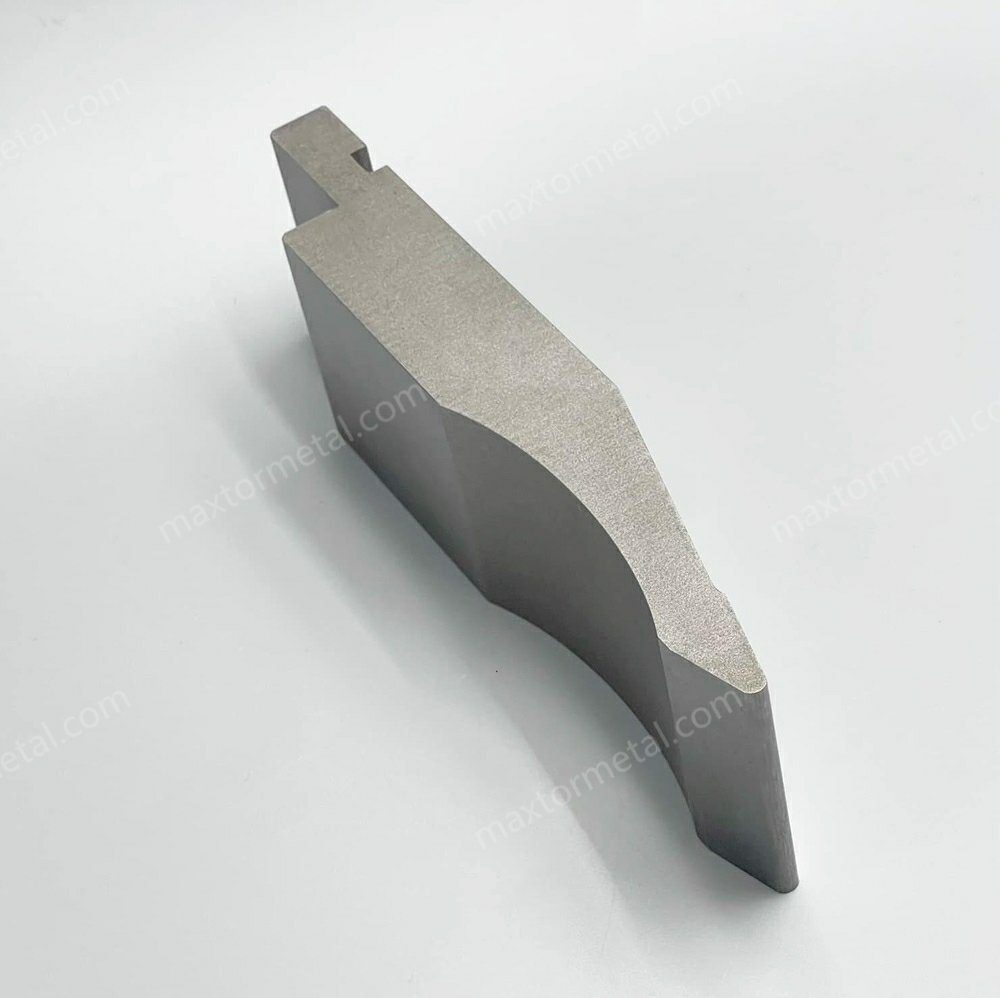
Keeping your press brake tooling in top shape protects your materials and keeps your production running smoothly. You can avoid many problems by following a simple maintenance routine. Let’s look at the best ways to care for your tools.
Regular Inspection
You should check your tooling often. Regular inspections help you spot wear and damage before they cause trouble. When you inspect your tools, you keep your materials safe from harm. Here are some important steps:
- Look for signs of wear or cracks on the die and punches.
- Check the surface for scratches or dents that could mark your workpieces.
- Make sure all fasteners are tight and secure.
- Measure the dimensions to confirm accuracy.
- Inspect the surface quality to prevent rough spots from damaging your materials.
Tip: A quick inspection before each job can save you from costly mistakes later.
Cleaning
Clean tooling works better and lasts longer. Dirt and debris can cause defects in your finished parts. You should clean your dies and punches after every use. Follow these steps for best results:
- Remove punches and dies carefully to avoid dropping or damaging them.
- Use a wire brush or soft cloth to wipe away dust and debris.
- For tough grime, use a mild cleaning solution that will not harm the metal.
- After cleaning, check for any worn or damaged areas.
- Set up a daily routine to clean and inspect your tools and check their alignment.
A clean die gives you smoother bends and helps prevent scratches on your materials.
Replacement
Even the best tooling wears out over time. You need to know when to replace your tools to keep your work safe and accurate. Use this table to guide your maintenance schedule:
| Frequency | What to Inspect |
|---|---|
| Before Each Use | Wipe clean; check condition; apply anti-rust oil |
| Daily | Check for cracks, misalignment, and visible damage |
| Weekly | Clean tools and machine parts; oil moving parts |
| Monthly | Reinspect all tools; oil punches and dies |
| Annually | Perform full calibration and replace worn parts |
If you notice deep scratches, cracks, or changes in shape, it is time to replace the die. Keeping your tooling in good condition helps you avoid defects and keeps your production on track.
Efficiency and Safety with Proper Tooling

Less Scrap
You want to keep waste low in your shop. When you use the right press brake tooling, you make fewer mistakes during bending. This means you throw away less metal. You save money and help the environment. Precision-ground tooling with tight tolerances, such as ± 0.0008 inch, helps you get the same results every time. You do not need to adjust your setup as often. This lowers the chance of errors that lead to scrap.
- You see fewer rejected parts when your tooling matches your job.
- Automated solutions can help you save up to 20% on quality costs each year.
- Consistent bends mean you do not need to rework or toss out parts.
You improve production efficiency when you reduce scrap. Your shop runs smoother, and you keep your customers happy.
Faster Setup
You want to spend less time getting ready for each job. Proper selection of press brake tooling makes setup quick and easy. When your dies and punches fit your press brake, you do not waste time searching for the right tools. You line up your materials and start bending sooner.
Tip: Organize your tooling by size and type. This helps you find what you need fast.
Quick-change tooling systems let you swap dies and punches in minutes. You do not need special skills to set up your equipment. CNC controls help you program your bends and angles. You save time and avoid mistakes. Your team works faster, and you finish jobs on schedule.
| Setup Step | Time Saved with Proper Tooling |
|---|---|
| Tool Selection | High |
| Die Alignment | High |
| CNC Programming | Moderate |
| Material Loading | Moderate |
You boost equipment performance when you set up quickly. Your press brake stays busy, and you get more work done.
Operator Safety
You want everyone in your shop to stay safe. Good press brake tooling helps you protect your team during bending. When you use the right dies and punches, you lower the risk of accidents. Strong tooling does not break under pressure. You avoid flying pieces and loud noises that can hurt workers.
- Proper tooling keeps your press brake stable during each bend.
- Smooth surfaces on dies and punches prevent sharp edges and cuts.
- Automated systems reduce the need for manual adjustments.
You keep your shop safe and your team confident. Safety leads to better work and fewer injuries.
Note: Always inspect your tooling before each shift. Replace worn or damaged parts right away.
When you pick the right press brake die sets, your materials stay safe. Keeping your die sets in good shape helps stop damage. High-quality press brake die sets give you better results. You can make your shop work faster and smoother. Good tooling helps your machines work well and keeps your jobs safe. Check your setup often and see how you can make things better. If you have special jobs or soft materials, ask a sales engineer for help on our contact page.
FAQ
What are press brake die sets?
Press brake die sets are tools you use with a press brake machine. They help you bend and shape metal sheets into different forms. You choose the right die set to protect your materials and get accurate results.
How do I know which press brake die set to use?
You check your material type, thickness, and the bend you need. Always match the die set to your job. If you feel unsure, ask your supplier for advice.
Can press brake die sets prevent scratches on metal?
Yes! Using the right press brake die sets helps you avoid scratches and dents. You can use protective films or polyurethane dies for extra safety with sensitive materials.
How often should I inspect my press brake die sets?
You should inspect your press brake die sets before each use. Look for wear, cracks, or dirt. Regular checks help you catch problems early and keep your materials safe.
Do I need special press brake die sets for aluminum?
Yes, you do. Aluminum scratches easily. You should use wider dies or soft materials like polyurethane. This helps you protect the surface and get smooth bends.
What happens if I use the wrong press brake die set?
You might see scratches, dents, or warped parts. The wrong die set can also damage your machine or cause safety risks. Always choose the right tooling for your job.
How do I clean and store press brake die sets?
Wipe your die sets after each use. Use a soft cloth or brush. Store them in a dry place to prevent rust. Clean tools last longer and give you better results.
Can I use one press brake die set for all materials?
No, you should not. Different materials need different die sets. Using the wrong one can damage your parts or tooling. Always match your die set to your material and job.
See Also
Air Bending vs. Bottoming: Choosing the Right Press Brake Tooling for Your Project
European vs. American Style Press Brake Tooling: Which is Right for Your Shop?
Choosing the Best Press Brake Tooling for Stainless Steel
Mastering Press Brake Tooling: How to Identify and Fix Punch and Die Wear
How Precision in Press Brake Dies Impacts Bending Results: A Guide to Achieving Perfect Bends
5 Essential Tips to Extend the Lifespan of Press Brake Tooling and Maximize Durability


